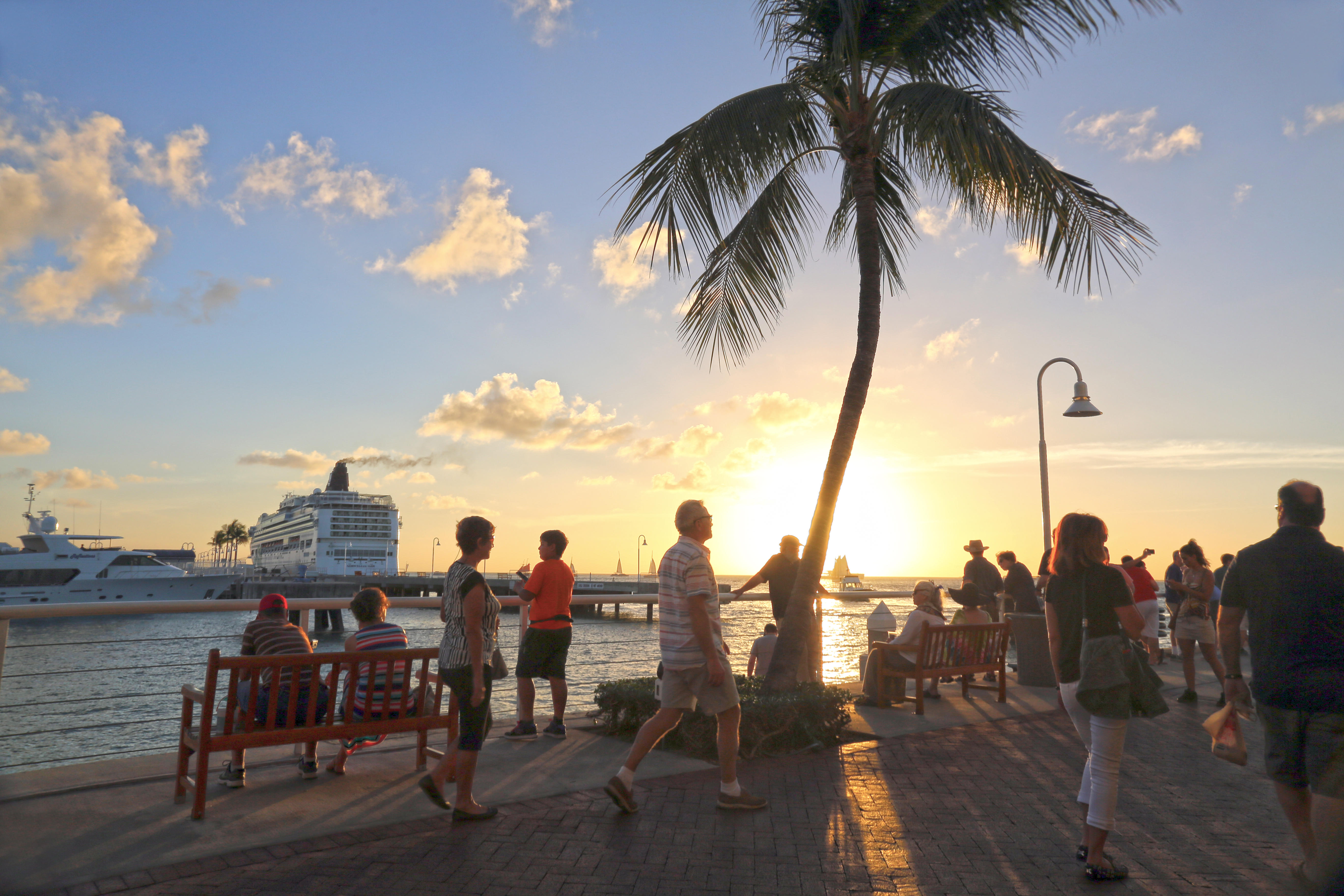Long before it became Margaritaville, Key West was a boom town built on bad news
On any given evening, Key West, Florida, jitters and bustles. Duval Street, the main drag, is thick with revelers, gawkers, and locals, a scene out of a Jimmy Buffett lyric. At day’s end, crowds flock to Mallory Square for the sunset and, with giant cruise ships as backdrops, a panorama of hawkers and buskers.
This fleshpot came into being as a low-lying swamp-ridden rock, part of the Dry Tortugas archipelago in the Florida Straits. Contrary tides and currents and, about seven miles off Key West, a large coral reef complicate life for mariners, as do sandbars and islets made up mostly of mangroves. Seeing a three-square-mile island ringed by tangles of the forbidding roots, Spanish sailors in 1513 named the landmass Los Martires—the Martyrs. In the early 1600s other Spaniards, finding Calusa Indian skeletons there, coined the name Cayo Hueso—Bone Cay, “cay” being another name for a reef. Storm-swept and rife with tropical diseases, Bone Cay nonetheless became a way station for Bahamian and Cuban fishermen who made use of the deep natural harbor. Eons of evaporation had left large deposits of salt useful in preserving catches, but scarcity of fresh water kept all but a few visitors from staying.
By the 1700s, the island had sprouted a scruffy harbor town whose Bahamian, French, Spanish, and English residents lived by their wits fishing, harvesting salt, and wrecking—retrieving vessels, crews, and cargos undone by the sea. They transported the resulting goods to Cuba, 90 miles south, and to the British Bahamas, 300 miles east. Within a century, however, Key West came into its own in a very big way.
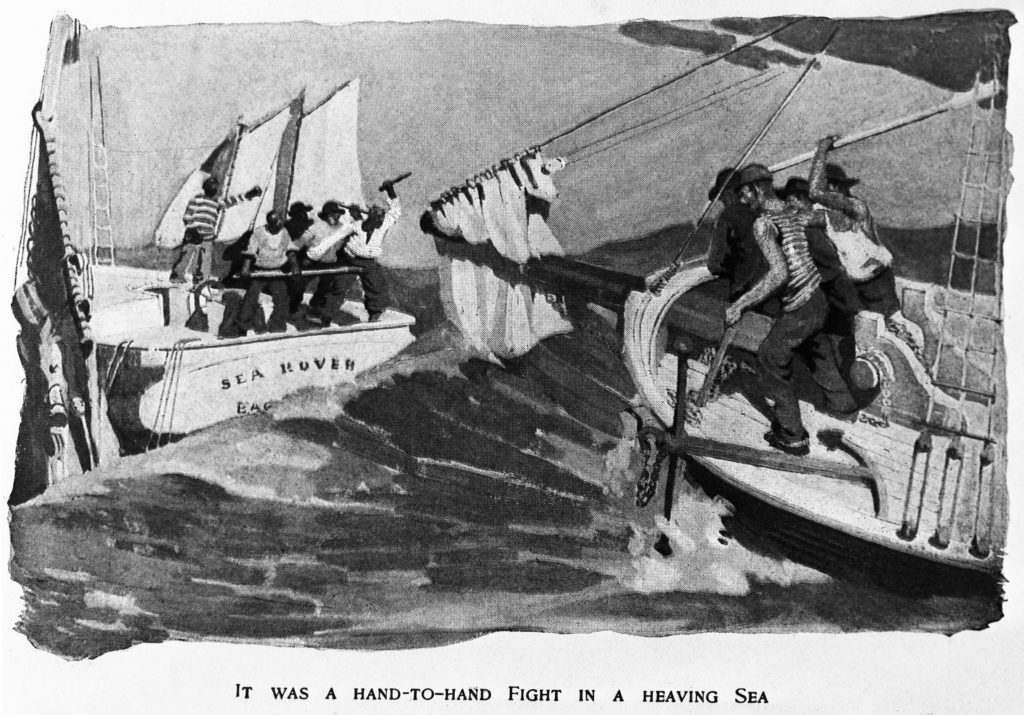
In the decades before the American Revolution, the Florida Keys changed hands several times between England and Spain. Afterwards, however, Spain solidified its hold on the chain. In 1815, owing him money for unspecified services, Spain deeded Cayo Hueso to one Juan Pablo Salas. Four years later, Spain ceded Florida to the United States, and Salas sold his island to American businessman John Simonton. For his $2,000—today, about $36,000—Simonton got that deep natural harbor, those salt deposits, and proximity to shipwrecks. He divided what Americans called Key West into quarters, keeping one parcel and selling three to John Whitehead, John Fleming, and Pardon Greene, who agreed with Simonton that while selling salt would make them money, salvaging shipwrecks would make them rich.
At the time, an average of 100 ships a day passed Key West, carrying cotton from the southern mainland, rum and molasses from the Caribbean, and kidnapped Africans destined for illegal sale in mainland America, which in 1808 had outlawed the slave trade, though slaveholders in southern states kept their human chattel. A vessel that ran aground or sank created business opportunities. Usually these were realized by Bahamian sailors called wreckers, or salvors, who patrolled the Straits for vessels in distress, disposing of what they salvaged at home or in Havana, Cuba. Under maritime common law, property abandoned and floating—flotsam—or washed ashore—jetsam—belongs to whoever finds it, even entire ships. If the original owner seeks return of the goods, the finder can charge a fee. Crewmen on vessels in distress could find themselves beset as much by would-be salvors slavering to get at a cargo as by conditions taking their ships down. When Florida became a U.S. Territory in 1821, no established, enforceable salvage law existed. If a salvaged ship and cargo reached port in a salvager’s possession, owners could expect to pay 57 to 90 percent of assessed value to get that property back. If salvor and owner made no arrangements, a court set an auction reserve, usually half the assessed value, but the amount awarded to the wrecker normally ended up being one- third of the net value of vessel and cargo.
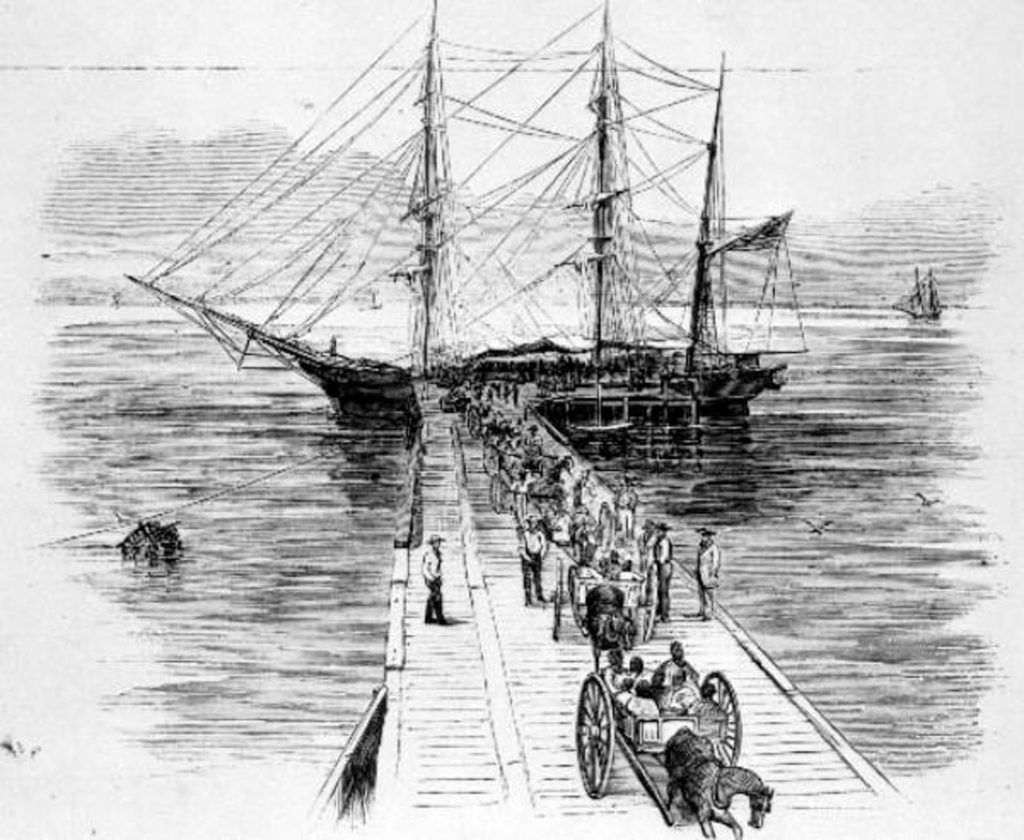
Of the four original partners, Pardon Greene was the only one who actually lived full time on Key West. The other three were independently wealthy investors whose capital underwrote the enterprises they controlled long distance. What all four did, especially Simonton, was encourage others to invest in and move to the island. Some of the people who listened to Simonton and the others, and made the move to Key West include Richard Fitzpatrick, a plantation owner from South Carolina who brought slaves with him when he moved to the island; Benjamin Strobel, a medical doctor and amateur naturalist from South Carolina; John Hurling Geiger, who was originally from Pennsylvania, but moved to St. Augustine in 1805, making his name and money in the unregulated shipping and wrecking industry before moving to Key West; Fielding A. Browne from Virginia and Charles Webb from New York, both of whom were successful investors in the mercantile industry. All of these men became prominent in the day-to-day workings of Key West.
Records show that Simonton had extensive business interests in Mobile, Alabama, as did two other businessmen, John Whitehead and John Fleming. It was Whitehead who drew Simonton’s attention to the business opportunity that existed in Key West, after being shipwrecked and taken there by wreckers in 1819. By all accounts Simonton resided in Key West only during the winter, spending the remainder of his time lobbying Washington and seeing to business interests in the north. Whitehead, the son of a rich banker in New Jersey, lived on and off in Key West until 1832. Fleming spent only a few months on the island in 1822 then moved to Massachusetts. Greene, the only original investor with boots on the ground, seemed to be the eyes and ears of the group, having his hands in all aspects of Key West life; both financially and politically.
In 1821, Simonton proposed that the U.S. Navy establish a base at Key West to protect American shipping from pirates and to discourage the slave trade; legally, slavers were pirates. Of course, he would profit on renting his harbor, but what he really wanted was to keep Bahamian and other foreign wrecking crews away from the Straits. Even before the Navy arrived in 1822, Simonton and partners set into motion an island-based salvage industry, hiring ship’s captains, often New Englanders experienced at sailing the Straits. Seeing opportunity, investors from the Northeast, the Carolinas, and elsewhere arrived, buying choice lots on the island’s high ground; the lowlands were for plebs. The Navy arrived and began patrolling; the United States ordered a customs house built on Key West. In searching for pirates, a category that by law included slavers, navy crews stopped, boarded, searched, and sometimes seized vessels—a routine that gradually drove off Bahamian salvors.
By the time a federal customs inspector arrived, in 1823, Key West had a strong mercantile sector and warehouses in which to store salvage. That year, the Florida Territory authorized local justices of the peace and notary publics to impanel five-member juries to decide the fate of property rescued by salvagers. A U.S. Admiralty Court invalidated the state law, which in any event would have been superseded by the 1825 Federal Wrecking Act, which stipulated that salvaged property be taken to an American port of entry, a status accorded Key West. Coincidentally, in 1825 Key West got the first of what would be several lighthouses. In 1828 the town was made the locus of the federal Southern Judicial District. The court was to assign a value to wrecked cargo and ships. If an owner could not or would not pay that amount, the items would be auctioned. Salvage had gone unregulated, but now wreckers, warehouse owners, and auctioneers posed challenge after challenge to James Webb, the first federal judge assigned to enforce the new laws.
Wreckers worked in constant danger, often in the very conditions that had overcome the vessels whose demise had drawn their attention. The first captain to reach a distressed vessel was the “wreck master,” entitled to direct rescue activities and salvage operations. A master wrecker made deals on the fly with late-arriving rivals, first rescuing passengers and crew, then assessing the situation. If a vessel had run aground but was intact, removing some or all of its cargo might refloat it. If its hull was stoved in, wreckers had to patch the hole, use hand-operated pumps to float the hulk and tow it to port. Wreckers had to be ready for anything, hence the stocks of ropes, pulleys, turnbuckles, planks, and caulking they carried. A wreck too far gone to tow would be stripped of usable items from sails to the ship’s compass. Eventually a wreck might be broken up where it lay, reduced to timbers, nails, and hardware.
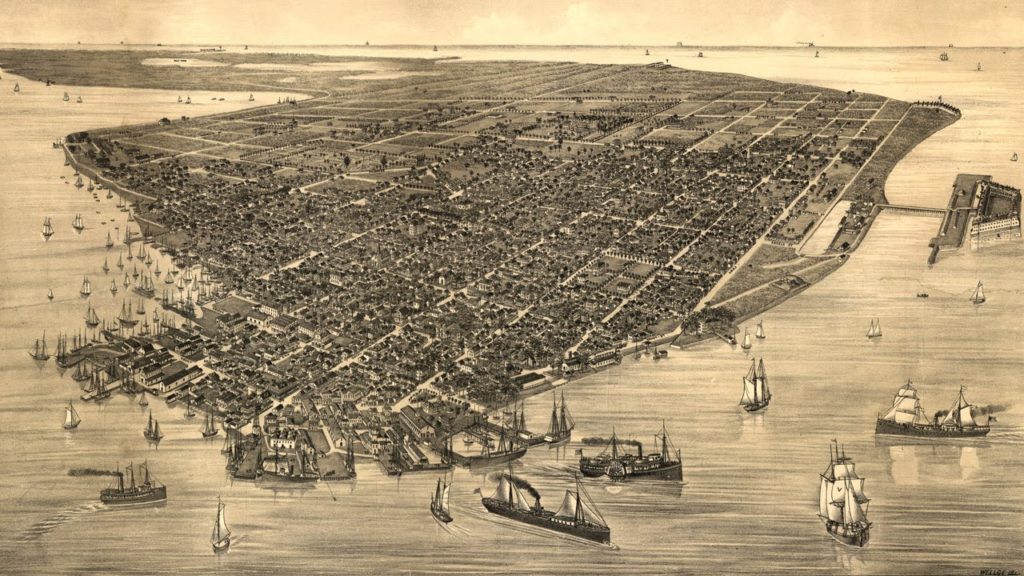
Successful wreckers were skilled, fast, and well-equipped. Their vessels came in all types and sizes but generally could hold cargo and were very seaworthy, outfitted with whatever crews might need: anchors, hawsers, block and tackle, chains for hauling stranded ships clear, plus materials and tools for refloating vessels and getting them to port. John Huling Geiger was a model specimen of the breed. Having extensive experience in both shipping and wrecking from his time in St. Augustine, by 1835 he was prominent among Key West salvors, outright owning wrecking vessels Caroline and Hester Ann and in 1836 buying into the Citizen. That year Geiger vessels participated in five salvages over three months that yielded $47,971. By 1840, Geiger was one of the Keys’ 10 wealthiest men. One factor in his sudden rise may have been slavery; bondsmen may have crewed his vessels. Geiger also was a banker, dealt in real estate, and leased slaves to the federal government to deploy in fortifying the Dry Tortugas. In 1849, he took possession of the ship Champion, which by year’s end had gotten in on 37 salvage operations.
Per federal mandate, salvaged goods were documented, appraised, and warehoused at Key West until insurers paid up. Unclaimed goods were auctioned, with proceeds going to the wreck master and participating captains. In 1835, the crew of the schooner Florida salvaged the brig SeaDrift, found by the court to have a salvage value of more than $51,000, of which the Florida’s captain received $20,595, less wages and the cost of provisions for his crew. Public safety also figured in salvage work, though often unremunerated. In 1831, the Maria, whose crew and passengers totaled 250, foundered on the reef off Key West. Wreckers rescued all hands, the equivalent of half the island’s population.
As a hub of salvage, adjudication, and auction, as well as a main source of salt nationwide, Key West become Florida’s largest city and America’s richest, per capita. The 1830s saw Key West become Florida’s leading port, accounting for 60 to 90 percent of territorial imports and exports. In 1824-25, sales in Key West of wrecked property brought $293,000. This revenue stream nourished taverns, brothels, restaurants, and other ancillary services. Mallory Square was cheek by jowl with warehouses. Shipyards were repairing and building vessels, spawning a lively trade for ship’s chandlers and sailmakers.
All this commerce involved remarkably few individuals. In 1830 Key West counted only 517 full time residents: 368 whites, 83 free blacks, and 66 slaves. The population spiked every month when bidders from the Gulf States, the East Coast, Cuba and the Bahamas arrived for auctions at which they competed with resident agents and local insurance brokers for deals.
A middle class of shopkeepers, cobblers, and shipwrights and a working class of sailors, barkeeps, and prostitutes developed. The island had a unique type of hooker—not a sex worker, but a specialized salvor. “Body hookers,” the lowest caste of Key West society, collected corpses left by shipwrecks. Using a long-handled device with a barbed business end, a hooker aboard a small craft would retrieve and load bodies for disposal beyond the nearest reef in open water, where sea life would consume the remains.
Prosperity did not necessarily mean easy times. Cholera, yellow fever, and malaria along with venereal disease, were common, and no respecters of wealth or status. Doctors were scarce. A few residents’ enormous incomes masked the poverty enveloping neighbors.
To make money, wreckers needed storage facilities. Warehouse space on Key West was prime property, and few warehousemen outdid Asa Tift. Besides profiting as a wrecker, Tift inherited his father’s Key West store, a holding he expanded to a string of warehouses. Tift often bid on his storing houses’ contents; acquisitions went on sale at his store. Besides retail and storage, Tift imported ice and dealt in real property. In 1843, he sold Geiger a parcel at Whitehead and Front Streets on which Tift’s fellow salvor built a residence. That dwelling is now known as Audubon House because artist and naturalist John James Audubon is said to have stayed with the Geiger family and used the gardens as models for works he produced while visiting in 1832. Tift bought another lot on Whitehead, notable for being 16 feet above sea level, and built the only house on Key West to have a dry basement. In 1931, writer Ernest Hemingway, long fond of the town at the end of the line, bought the Tift house, now known as Hemingway House.
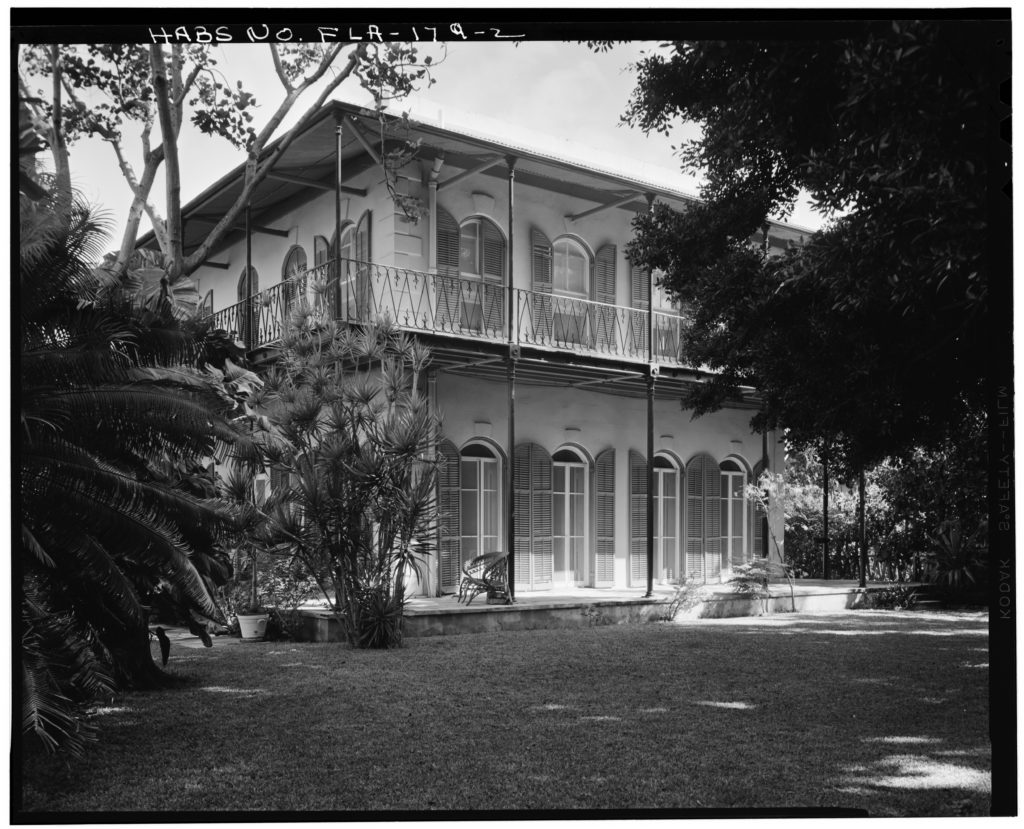
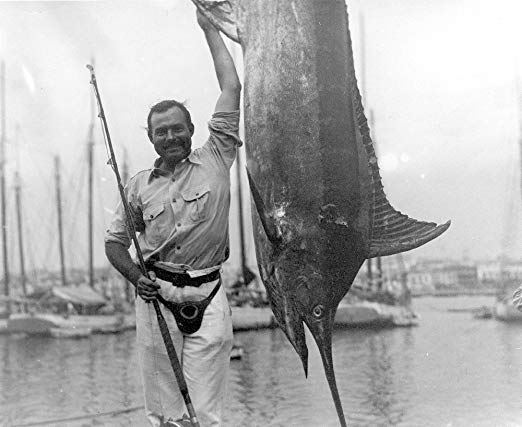
The construction of the first Key West lighthouse in 1825 had been a warning that no boom lasts forever. Lighthouses began to dot shallows and sandbars throughout the Dry Tortugas. An 1846 hurricane played havoc with them, but by 1848 most were back in service. The arrival in the 1870s of steel-hulled ships able to withstand brushes with reefs reduced incidence of sinkings, founderings—and salvage. In 1910 a railroad linked Key West to the mainland, reducing the need for shipping to and from the island. The wrecking trade diminished drastically, evolving into a genteel business revolving around insurance, environmental concerns, and, occasionally, obstruction of sea lanes.
Ships still go down off Key West. Until the 1970s, the U.S. Coast Guard towed disabled ships to safe harbor, but that courtesy grew too costly in resources and time. Now authorities call Coffin Marine Services or another wrecker to secure the hulk. “There are many more regulations,” Captain John Coffin says. “Prices for towing a ship are set based on the size and class of the boat being towed. If additional repair work needs to be done, that goes onto the bill as well.” The entrepreneurial element has not disappeared, however. According to Captain John Coffin, most private yachts carry no insurance. When a case involving a salvaged pleasure craft reaches court, the wrecker involved often winds up with title to the vessel and authority to sell it whole or part it out, just as in John Geiger’s heyday.

